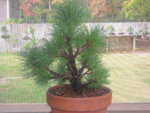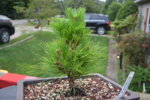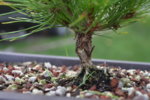Japonicus
Masterpiece
There's a 1st for many things, today I share 2 or 3 1st's for this tree.
1st purchase from Brent at EGGW received Valentines Day this year.
My 1st Brocade cultivar and the 1st time I've repotted this tree.


The roots aren't terribly strong but I wanted to get this lil gem into a more lateral pot for training and give ample room to grow out, and in bonsai soil.
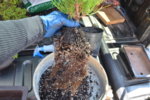
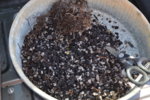

I put a cup or so of the original soil back on top of the roots once in place, but didn't see Miccorhyzea so I did inoculate with a teaspoon full about the top of the root zone
then misted that into place before topping off with new soil, though that is not pictured.



I'm not positive this is the angle I want this to grow at, nor the front for the final strategy, but the nebari is making a good frontal aspect.
1st purchase from Brent at EGGW received Valentines Day this year.
My 1st Brocade cultivar and the 1st time I've repotted this tree.


The roots aren't terribly strong but I wanted to get this lil gem into a more lateral pot for training and give ample room to grow out, and in bonsai soil.



I put a cup or so of the original soil back on top of the roots once in place, but didn't see Miccorhyzea so I did inoculate with a teaspoon full about the top of the root zone
then misted that into place before topping off with new soil, though that is not pictured.



I'm not positive this is the angle I want this to grow at, nor the front for the final strategy, but the nebari is making a good frontal aspect.

